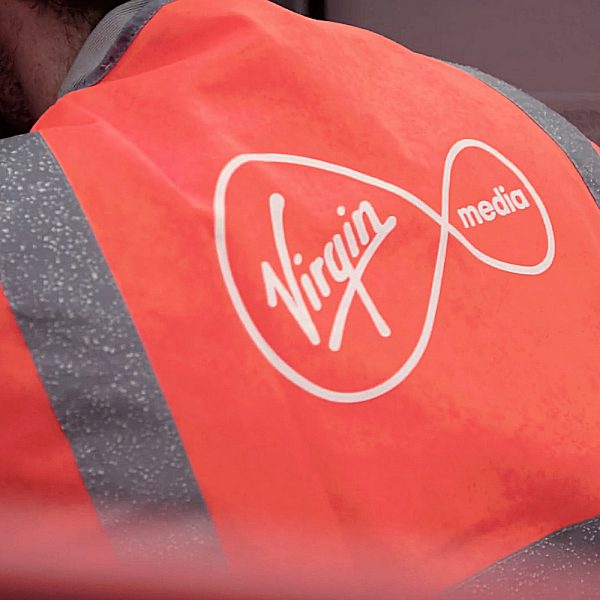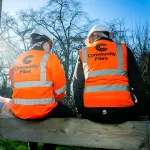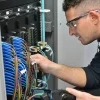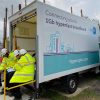Liberty Global CEO Updates on Virgin Media UK Going Wholesale, AltNets and TalkTalk

The CEO of Virgin Media’s co-parent operator Liberty Global, Michael Fries, has given a useful update on the progress they’re making with opening up their UK broadband network to wholesale (NetCo), the potential for consolidation within the alternative network (altnet) market and their position with respect to ISP TalkTalk’s debt problems.
Just to give a little context. UK ISP Virgin Media previously announced that their own network of 16 million premises passed will be opening up to wholesale via NetCo in H1 2025 (here), which Michael Fries told investors this week was still on-track to start during the first half of 2025, and they’ll begin “financing discussions probably commencing really Q4 this year“.
As a complement to that, Virgin Media’s Project Mustang is busy upgrading their older Hybrid Fibre Coax (HFC) and Radio Frequency over Glass (RFoG) based FTTP network – covering over 16 million premises (c.14.3m via HFC) – to harness XGS-PON based FTTP technology by 2028.
Advertisement
Finally, Telefónica, Liberty Global and InfraVia Capital Partners also setup a £4.5bn joint venture called nexfibre (here), which aims to deploy an open access FTTP (XGS-PON) wholesale network to reach “up to” 7 million UK homes (starting with 5m by 2026) in areas NOT served by Virgin Media’s own network of 16m premises. But Virgin Media, which shares some of the same parentage, is currently the only ISP on this network (here).
The rationale for the combination of their new NetCo and Nexfibre business was given a little more colour by Michael Fries yesterday. In addition, they also now seem to be expecting closer 21-22m premises passed in total, rather than the 23m maximum previously touted.
Michael Fries said:
“Together with our JV, which we call nexfibre, VMO2 will ultimately have access to between 21 million and 22 million fibre [FTTP] homes in the U.K. and that’s about 80% of the urban market. And the combined network would be available to third parties, potentially driving utilization and newfound wholesale revenue.
So why are we doing all this? What is the rationale for what appears to be from the outside of relatively complicated restructuring of our operations into NetCos and ServCos in these 2 markets? I think the answer is pretty straightforward, actually.
On the NetCo front, once the physical infrastructure is isolated in these platforms, they can generate made stable and high-margin cash flow driven primarily by the fixed monthly wholesale payment they receive from retailers for utilization of that network. As the utilization rate climbs, the cash flows improve, driving long-term returns to financial and strategic investors. These platforms also allow us to attract new capital which helps accelerate our network upgrade and extension plans and they can facilitate in-market consolidation of both network and operating platforms.
The remaining ServCo can also benefit from the separation which we end up with is an asset-light, typically a digital-first business model that prioritizes customer experience in order to differentiate from other retailers. There’s more focus inevitably on innovation to drive new revenue streams as well as the opportunity for end-market consolidation of other B2B and B2C service providers.”
The discussion later turned to consolidation, which is an area that the CEO of nexfibre, Rajiv Datta, has previously indicated (here) is something they were open to exploring further (i.e. like the deal they did to acquire Upp). But he also stressed at the time that their main plan was still based around build. Suffice to say that Michael Fries follows a similar line and seems to indicate that consolidation is a tougher sell for their approach.
Michael Fries said:
“I mean you are seeing a slowdown in build as financing and capital slowly dries up and I think that will continue. There will be winners and losers in that game. Some continue to raise capital. Others will consolidate and others will stop build. And so inevitably, one way to improve their prospects is to start selling more directly and perhaps more competitively, it’s still very early days.
It’s too soon to tell whether this will have an impact on the broader market, whether it will have an impact on their futures and — or our ability to consolidate or not in this market. But I think the trend is the same. There are companies like nexfibre, which is fully financed at GBP 4.5 billion that we own a piece of, that is going to be building, full stop and is going to get to 5 million to 7 million homes. No question about it. There’s VMO2 which is going already at 16 million homes and 3.5 million – 4 million of which are fibre and is going to get to full fibre, full stop. So there’s going to be platforms like ours with 21 million to 24 million homes and that’s a certainty and BT is a certainty. And the rest, we’ll see how it shakes out.
The writing is on the wall, so to speak but that doesn’t mean between here and there, it’s a straight line. There will be puts and takes. We look at M&A prospects along 3 or 4 levels. First of all, what’s the overbuild with us, if we can upgrade at £100 [per premises], what’s it worth it to us to acquire an existing fibre home that somebody spent £500 to build. Secondly, the quality of that network, obviously, what it would cost us to get to our sort of level of sophistication. And thirdly, is there a customer base. And maybe your main question is, does the existence of a customer base on an alternate change that dynamic materially. And I would say no. If there are customers and we would look to see how those could be integrated or required or migrated. That in and of its doesn’t change the principal analysis. It’s more about where they built, how much they’ve spent to build and how it fits with our broader strategy.”
Finally, Michael also touched on the thorny issue of TalkTalk’s spiralling debts and the possibility of Virgin Media (O2) acquiring part or all of that business (something they’ve repeatedly been linked to in the past), as well as any potential regulatory obstacles.
Advertisement
Naturally, the experienced CEO attempts to duck the question a bit by saying they’re “not assuming TalkTalk is doing anything but competing with us until they’re not,” before later indicating that we should assume they do still have some interest.
Michael Fries said:
“I mean we watch as others do, with great interest of what’s happening across the sector in the U.K. but obviously, with TalkTalk, they’re a competitor. And we certainly are watching what they’re doing and what they’re considering doing and with their B2B, with their network, with their consumer business, it’s really outside of our control. And if there were opportunities, you should assume we would be looking at them, but there’s nothing I can say about that today.”
Time will shortly tell on the TalkTalk issue, but otherwise that’s all we have for today.
Mark is a professional technology writer, IT consultant and computer engineer from Dorset (England), he also founded ISPreview in 1999 and enjoys analysing the latest telecoms and broadband developments. Find me on X (Twitter), Mastodon, Facebook, BlueSky, Threads.net and Linkedin.
« Essex Council Take Legal Action Against Rural Broadband ISP Gigaclear























































So will they be opening their legacy DOCSIS network to wholesale as well as FTTP? The article seems to imply they will.
Correct. But over the next few years, that will be changed from DOCSIS to full-fibre, so then VM will have a full-fibre network, at wholesale, and nexfibre will have a full-fibre network, at wholesale. I suspect from his use of ‘ServCo’ that when both networks are full-fibre, or possibly when the majority is, both networks will get merged and then VMO2 will be turned into just a services company that has no infrastructure, except any O2 assets it has – which are a separate story of course.
Docsis wholesale would be way too hard. I would suggest they the FTTP network would be what would open up to others. In the same way that NexFibre would like more than just VM as an ISP. Getting another Tier 1 or several Tier 2 ISP’s would be what they want but getting them is another thing.
They won’t. It’s all going to be replaced by Fibre at some point. If they’re smart they’ll hold off wholesale until it’s all converted but you know they’ll just have it where you can order in “some areas”.
> another Tier 1
VMO2 is not Tier 1 — they buy transit from AS3356 (and possibly other networks).
Would DOCSIS wholesale actually be “hard” though? Australia’s NBN has done it, albeit with exclusively Arris/CommScope kit at both ends. I understand VM uses Cisco CMTSes, at least in part. They managed that despite the physical network carrying Telstra’s legacy DOCSIS and QAM TV signals too for a co-existence period until NBN took full control
Economically I would agree. I don’t see anyone bothering to join VM’s DOCSIS network when Openreach and others can provide superior services, and even the likes of Cityfibre can’t attract many big name ISPs (which I suspect is what the poster meant by “tier 1”, not the peering definition)
Tier 1 ISP, they have VM02, but would like to attract others to the platform such as SKY or maybe even Talk Talk..
Tier 2’s are less hassle to integrate but are quite demanding considering the volume they would bring.
Ivor, VM use mostly Arris CMTS now. Pre-DocSIS 3.1 a lot was Cisco and some older Motorola (River Delta), small bit of legacy Nokia. Most of this, if not all, is now Arris kit.
So many laughable things in Fries statement, in my opinion, and translated the BS as below:
1. He says “So why are we doing all this?” – translated answer = money and profit. We charge customers way over the odds compared to better comparable speeds from other providers and we must keep on the gravy train. We spent too much money buying VM originally and have debt.
2. He says “It’s too soon to tell whether this will have an impact on the broader market, whether it will have an impact on their futures and — or our ability to consolidate or not in this market. ” – Basically a wannabe cartel, “consolidating” competition, driving it out acknowledging in the article that VM and BT will be left as certainties.
3. He says on other ALTNETS “Secondly, the quality of that network, obviously, what it would cost us to get to our sort of level of sophistication.”. Actually according to the VM forums your Nexfibre is plagued with issues ranging from incorrect provisioning, slow throughput and customer service denying customers can add a symmetric add-on. Similar with the older HFC network plagued with utilisation issues and you have now dropped “our superior network” from your advertising finally. In contrast, most Altnets just work, symmetric by default and not thousands of people complaining about speed issues.
This was my translation of the text…
They can’t even get their old network running correctly, this will be a mess.
Pretty much spot on, the VM name is badly tarnished and they want others to sell on their network so there is guaranteed income.
VM, in whatever disguise, can jog on.
VM’s problem is that for about the last nine years customer numbers have been stagnant, as has average revenue per user (ARPU), yet they’ve needed to throw huge sums at network extension, first as Project Lightning, more recently as Nexfibre, and with the XGS-PON as another investment demand. There was a small uptick in ARPU in the last quarter’s results, but it’s still roughly where it was back in 2016 – and that’s in cash terms, if you adjust for inflation it’s notably lower now than 2016.
At the root of all this is that VM aren’t really an asset based business – they operate in a price sensitive market, so need to discount heavily or lose customers, therefore the focus is on marketing, new sales and retentions. Back in the day when they were the only high speed horse in town they thought this didn’t matter. Now Openreach can offer a comparable speed over FTTP and have a lower cost to serve. That’s not good news for VM, but worse, VM have spent the past decade alienating customers with atrocious service and dislikeable commercial practices. In the past few days, VM have deservedly won a Shoddy at the annual Which? awards for crap customer service. Not to mention a deeply dishonourable mention in the Guardian that’s worth searching out.
Mr Fries might care to ask himself why people like me, a customer of VM and predecessors for over a quarter of a century will never become a customer of his company again – no freebie, no discount, no low price, no marketing promise will tempt me back.
And behind it all we have the arcane financing of Liberty Global and VMO2. I’ve got a decent range of qualifications up to Master’s level, I’ve been paid serious money to undertake commercial analysis, and I can’t see how the indebted monstrosity that is VMO2 will ever achieve a credible return on the capital employed. A successful business is always about pleasing customers. NTL forgot that decades ago, and the company that masquerades as VMO2 is NTL at heart. Fries is a Liberty Global man, so he’s committed to the arcane financials, the art of plate spinning, but I have to ask how much longer this can go on?
It doesn’t sound good if you’ve still got debt outstanding from building a network that you’re now ripping out and replacing. Debt on a worthless asset is not a good place to be.
They forgot the telecoms lesson they taught everyone else.
Build it and you’ll go bust. Buy it from the person who went bust building it and you might have a stab at making some money.
Many seem to forget how Virgin Media used to wholesale it’s docsis cable network to AOL back in the last dying years of NTL. AOL (America Online) used to allow consumers to buy their own Cable Modem – amd have it paired to the cable network and took charge of end user billing.
The arrangement died with the creation of Virgin Media.
Didn’t this go live in about the summer of 2003? It must have lasted until February 2007 when NTL renamed itself Virgin Media.
My thoughts are that if Netco wants to wholesale its DOCSIS network then it would be a similar kind of deal. I really doubt if customers will be allowed to buy their own cable modem, what might happen is that the hub 5 gets rebranded to what the ISP wants.
https://www.campaignlive.co.uk/article/ntl-85m-broadband-deal-aol/166066
Again, an absolutely crap map. Can’t make out any of my areas on that map. Wish they would get a grip and offer decent maps so you can actually zoom in to see where the planned works are…. useless!
What’s even happening with Upp? Almost 2 momths in from the supposed “Upp is closing on the 1st June” and Upp service is stil fully active, no part expect billing has been migrated to the Virgin Media name. Still using the Linksys velop router. No communication at all from either Upp or VM.
I can’t help but read his statements in a Trumpesque voice. Maybe it’s just some of the language he uses!